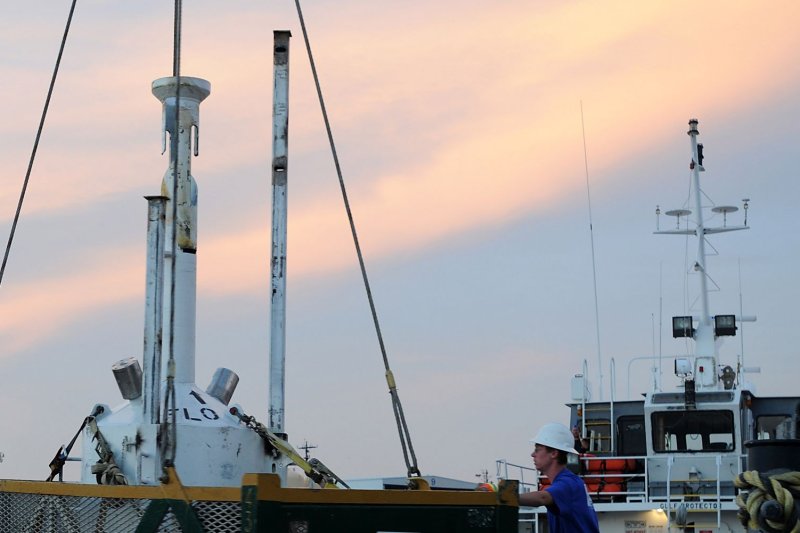French energy company Total could use gas from onshore Oman to help supply marine vessels with liquefied natural gas. File Photo by Patrick Kelley/U.S. Coast Guard |
License Photo
May 14 (UPI) -- Natural gas from onshore basins in Oman could be used to develop a maritime fueling point for liquefied natural gas, French supermajor Total said.
The French company signed a memorandum of understanding with the Omani government to develop, alongside its Dutch counterpart Royal Dutch Shell, an onshore natural gas basin that could have a peak capacity of 1 billion cubic feet per day.
Analysis published early last month from consultant group Wood Mackenzie found that improved market conditions and improvements on where operators can break even in terms of the price of oil led to an uptick in industry sentiment. For natural gas, the bonanza could be in Iran, Norway and Oman.
The French company said it would use its share of the gas in Oman to develop a regional hub for LNG bunkering for fueling marine vessels.
Bunkering is the ship-to-ship transfer of fuel. Total in July said it was making strides on LNG as a fuel through its marine fuels subsidiary. Its first agreement for LNG bunkering was signed with Brittany Ferries, a French passenger and freight shipper that starts to get the supplies in 2019.
"Developing an LNG bunkering service will generate in-country value and job opportunities, and will support industry diversification through fostering the shipping activity in Oman," Arnaud Breuillac, the president of exploration and production at Total, said in a statement during the weekend.
The French supermajor said LNG as a fuel source is transformative given the maritime shipping industry's quest to cap emissions of nitrogen oxide, carbon dioxide and other harmful greenhouse gas emissions.
The 173-member International Maritime Organization in April agreed to cut emissions from its industry by 50 percent from 2008 levels by 2050.















